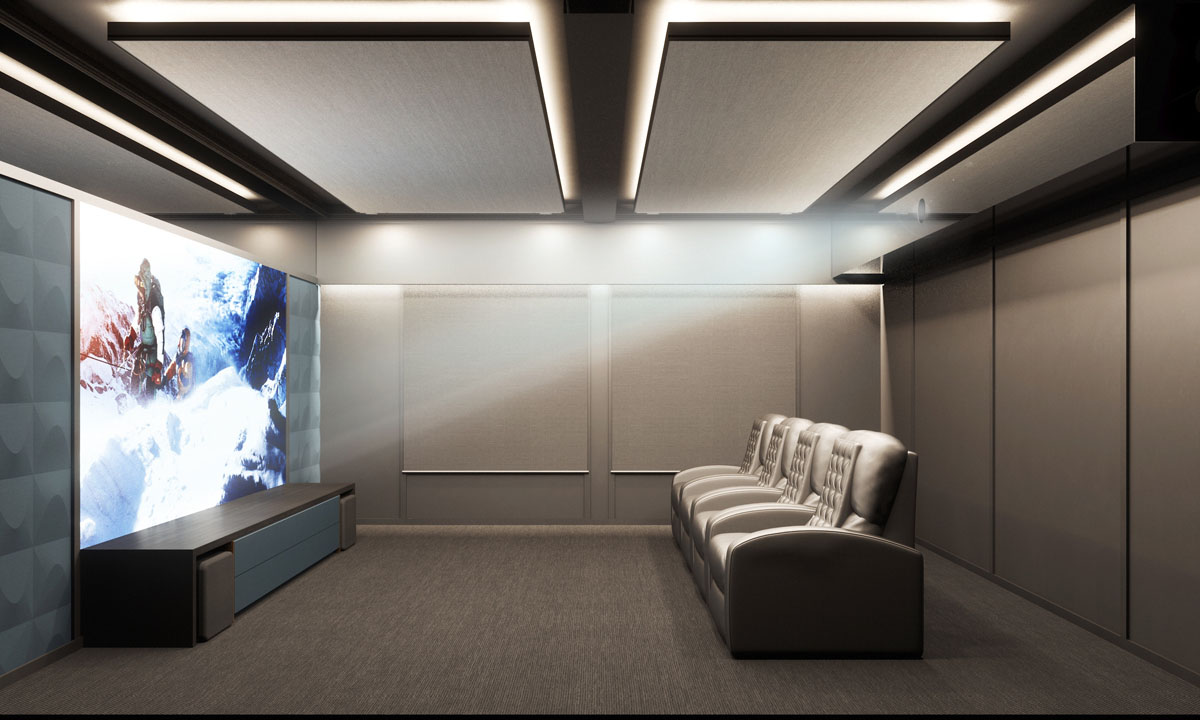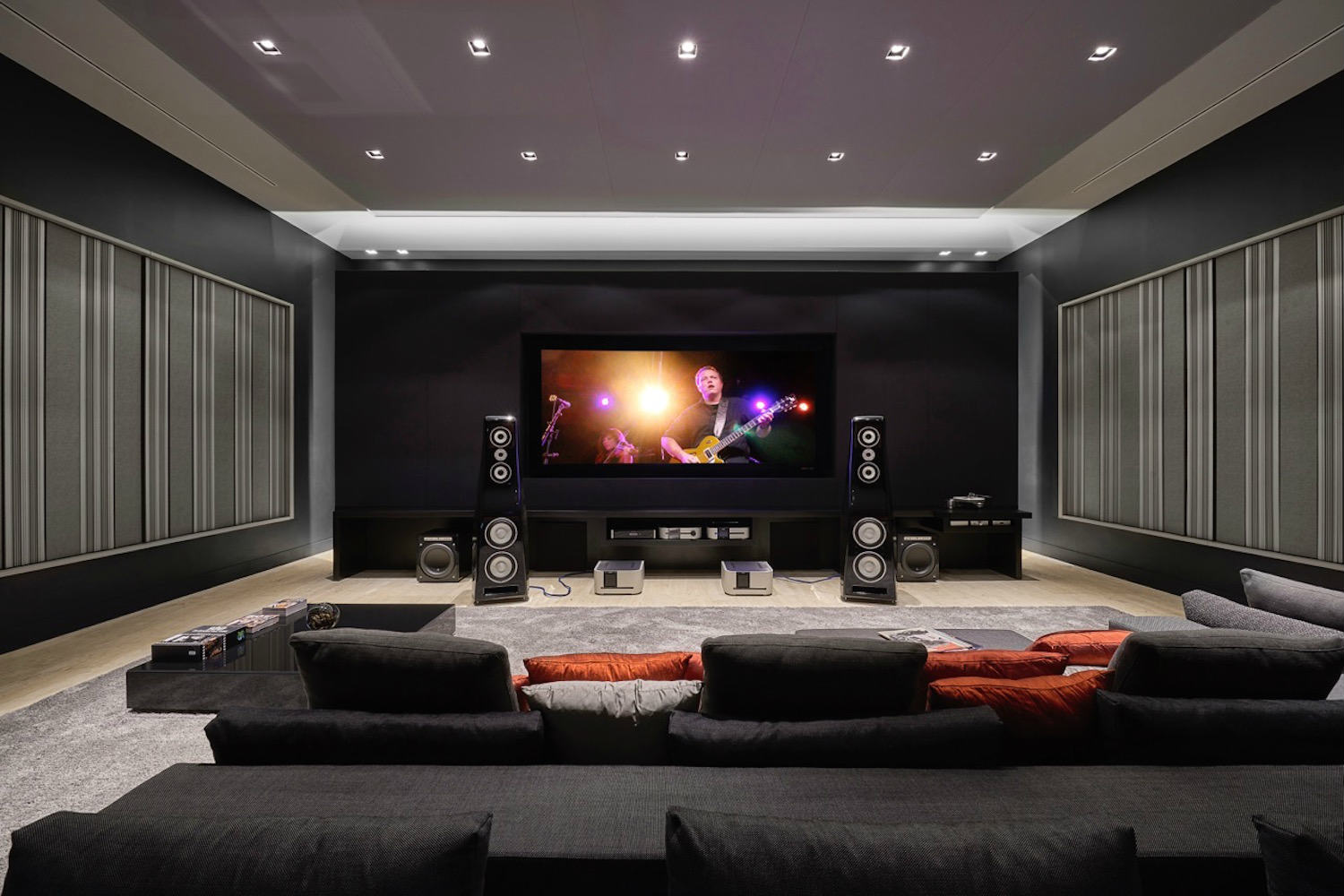Key Reasons to Choose Home Theater Tampa for Your Upcoming Project
Key Reasons to Choose Home Theater Tampa for Your Upcoming Project
Blog Article
Home Theater 101: Every Little Thing You Required to Know for a Motion Picture Experience in your home
Developing a home movie theater that measures up to the motion picture experience of a business theater involves cautious consideration of numerous parts, consisting of display choice, audio systems, and area format. Each aspect plays a critical duty in achieving the wanted atmosphere and performance. Whether you are considering the optimal display dimension or the intricacies of border sound, understanding these fundamentals is crucial. As we check out these important components, it ends up being noticeable that the options made can substantially impact your total viewing experience, leaving one to ponder how these decisions will certainly form your individual movie theater.
Choosing the Right Screen
When establishing up a home cinema, picking the right screen can make or damage the viewing experience - tampa home theater. The screen works as the focal point of your configuration, affecting image top quality, seeing angles, and general visual. Trick variables to consider consist of screen dimension, resolution, and type
Initially, establish the ideal screen size based on your room dimensions and seating range. Next, select in between various screen types, such as fixed-frame, motorized, or retractable displays, each offering unique benefits.
Resolution is one more vital variable. For a genuinely immersive experience, consider a screen created for 4K or even 8K content, making certain intensity and clarity. Additionally, consider the display's gain, which influences illumination and comparison; a greater gain can improve illumination in well-lit rooms, while a lower gain may be much more ideal for darker settings.
Choosing Sound Equipment
Audio equipment is a critical component of any type of home cinema system, considerably boosting the general watching experience. The option of audio gear can identify the depth, clarity, and immersion of sound, crucial for developing a cinematic ambience.
When selecting audio devices, take into consideration a border stereo, which generally consists of a receiver, several audio speakers, and a speaker. A 5.1 or 7.1 channel system is advised, where the first number represents the speakers and the second the subwoofer, giving an immersive soundscape. The receiver is the heart of the system, managing audio and video clip signals, and need to sustain modern layouts like Dolby Atmos for a boosted spatial experience.
Quality speakers are necessary; try to find designs that provide a balanced sound profile with excellent bass feedback. Floor-standing audio speakers can create richer noise, while bookshelf alternatives save area. Additionally, consider cordless choices for convenience of installation, although wired systems often supply remarkable performance.
800w.jpg)
Optimal Seating Arrangements
Creating a perfect home theater experience hinges significantly on optimal seating setups. The arrangement of seats plays a vital role in both comfort and watching quality, directly influencing the total motion picture experience.
First, think about the display dimension and checking out distance. A common guideline is to place seats at a range roughly 1.5 to 2.5 times the diagonal size of the screen. This makes certain an immersive experience without stressing the eyes.
Next, altitude is critical. The back rows should be greater than the front to prevent obstructions Click This Link if your seats is in a tiered format. For level seats, make sure that the front row is not too near the screen, and that everyone has a clear line of vision.
Furthermore, consider the plan in terms of social characteristics. Group seats can improve the common experience, while individual seats may be preferred for individual viewing.

Last but not least, prioritize convenience with ergonomic seating that sustains prolonged viewing periods. Including recliner chairs or supported seats can substantially improve the experience, making the home cinema a preferred destination for both entertainment and leisure.
Lighting and Atmosphere
Reliable lights and atmosphere are important elements of a properly designed home theater, as they significantly affect the watching experience. The best illumination can boost the cinematic feeling, while inadequate selections can take away from it. For ideal results, think about a split lighting method that consists of ambient, task, and accent lighting.
Ambient lighting supplies basic illumination, guaranteeing that the area is not entirely dark, which can strain the eyes. Dimmer switches are highly recommended, permitting changes based upon the web content being viewed. Task lights, such as This Site wall sconces or flooring lights, offers practical illumination for activities like reading or navigating the space without interfering with the total environment.
Accent illumination can be utilized to highlight architectural features or produce centerpieces, including deepness and rate of interest to the area. LED strip lights behind displays or along shelves can offer a refined radiance that improves the visual experience without frustrating the visitor.

Wiring and Installation Tips
A tactical circuitry setup is important for achieving optimal efficiency in your house theater system. Appropriate wiring not just makes sure high-quality audio and video clip signals however also boosts the overall visual of your area. Begin by mapping out your format, identifying where each component will certainly be put, including your screen, speakers, and receiver.
When choosing cables, focus on top notch, properly determined electrical wiring to lower signal loss. HDMI cables ought to be utilized for video links, while speaker cord should match the specs of your audio speakers and amplifier. Choose for in-wall ranked cable televisions to abide by safety requirements and maintain a tidy look.
Conclusion
In recap, producing an exceptional home cinema experience needs cautious factor to consider of helpful hints different components, including screen option, audio tools, seating plans, lights, and wiring. By focusing on these factors, a motion picture atmosphere can be efficiently reproduced, permitting for immersive viewing experiences that measure up to conventional movie theater settings.
Producing a home cinema that matches the motion picture experience of a business theater involves cautious consideration of multiple elements, consisting of screen selection, sound systems, and room layout.When setting up a home movie theater, choosing the best screen can make or break the seeing experience. Next off, select in between different screen types, such as fixed-frame, motorized, or retracting screens, each offering distinct advantages. For a genuinely immersive experience, consider a screen designed for 4K or also 8K content, making certain sharpness and quality.In summary, creating an extraordinary home cinema experience needs careful factor to consider of various components, consisting of display choice, audio tools, seating arrangements, lighting, and electrical wiring.
Report this page